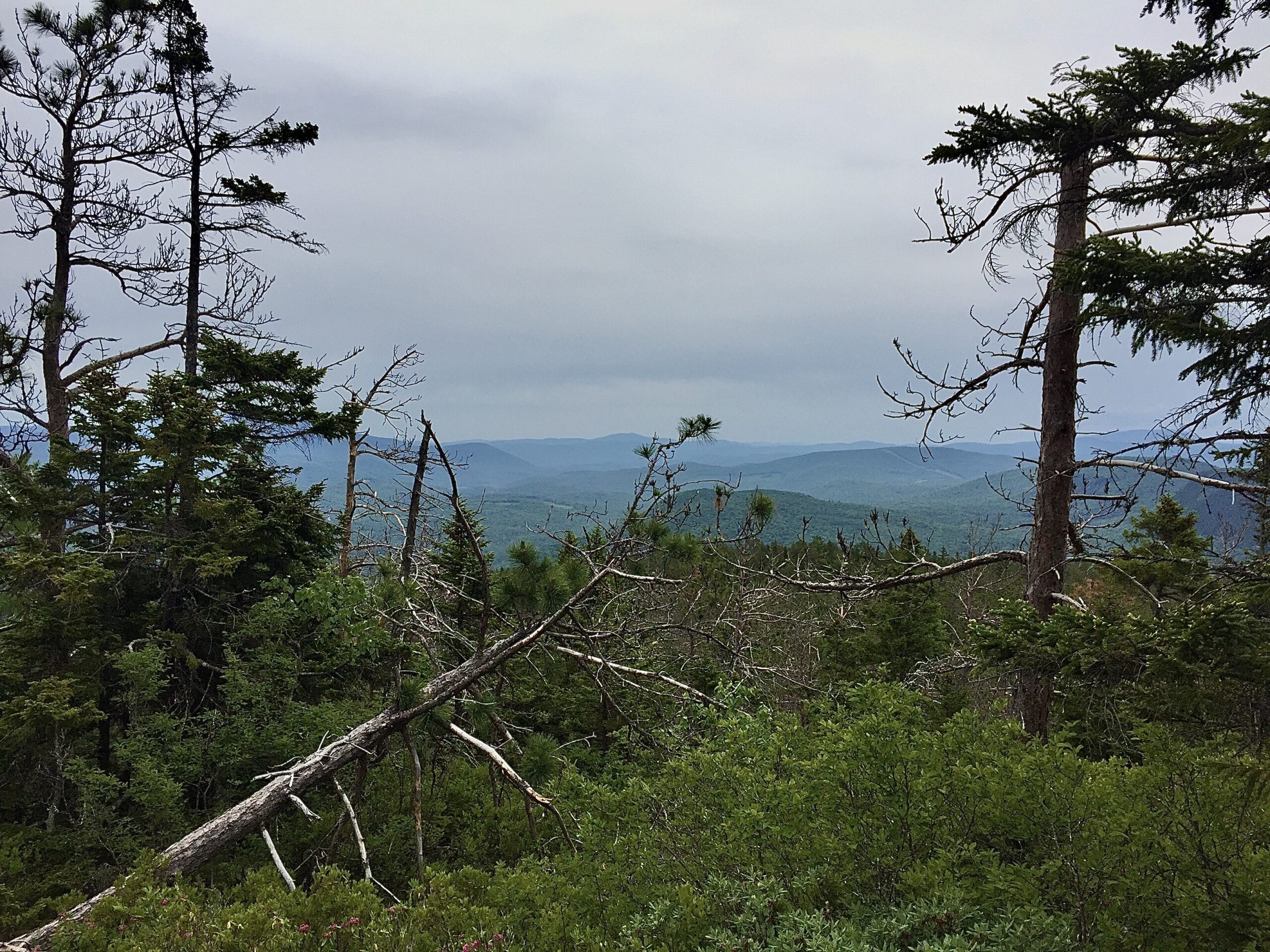The weather for this weekend didn’t look particularly promising— there were showers and thunderstorms predicted starting on Saturday morning, but with contradictory forecasts and a promising radar map (and with rain gear) we set out under cloudy skies to take our chances with a hike over Blueberry Mountain.
The lady’s slippers and trilliums of Spring have faded but the purple-flowered raspberry and sheep laurel now bloom in abundance.
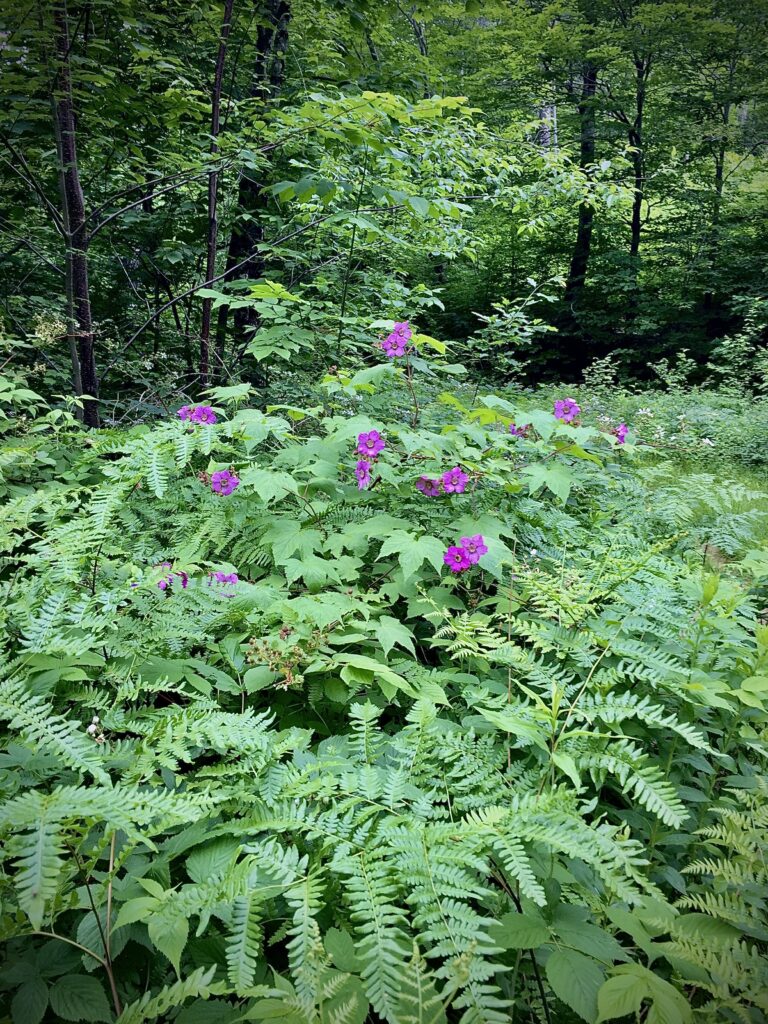
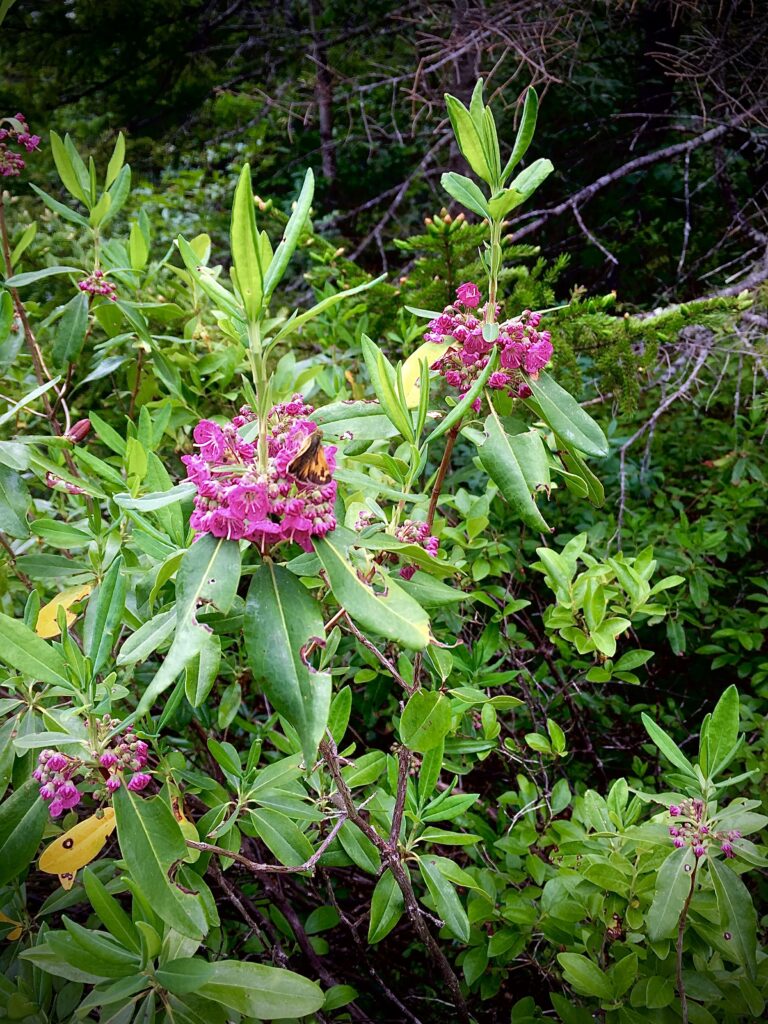
The trail starts on an old logging road in the forest, but eventually leads up over rocky slabs with a sparse cover of lichens and just enough soil to support some scraggly trees. The whole White Mountains region was logged within the past 150 years, with roads and rail lines spreading out through the forest onto steeper slopes as the more accessible terrain was cleared. I wonder where that crossing point was for the lumber companies— where did the cost and effort of cutting small, sparse trees on rocky ledges and steep summits outweigh the value of the timber and pulp? When we hike through the krumholtz, are we visiting the last patches of old growth forest?
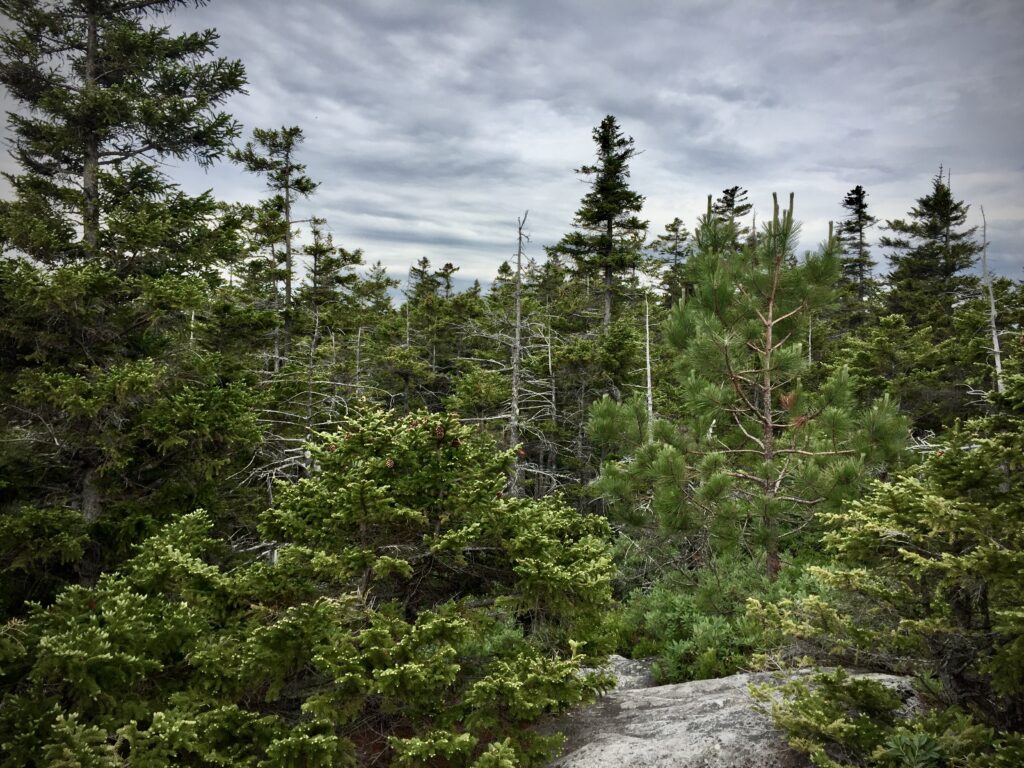
Near the summit, the trail tracks over a quartz vein intruding on the underlying granite that looks like a crystal staircase ascending the rock.
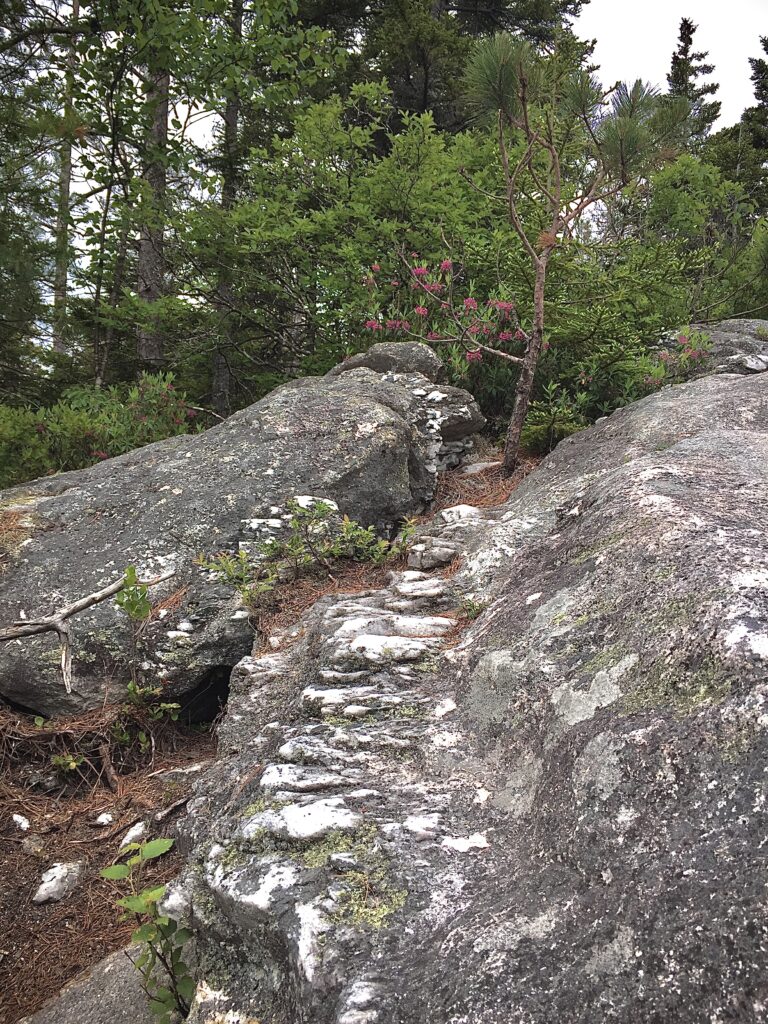
Just down from the summit is another intrusion into the granite, where this little rock fissure resisted weathering, leaving a speed bump along the surface of the slab.
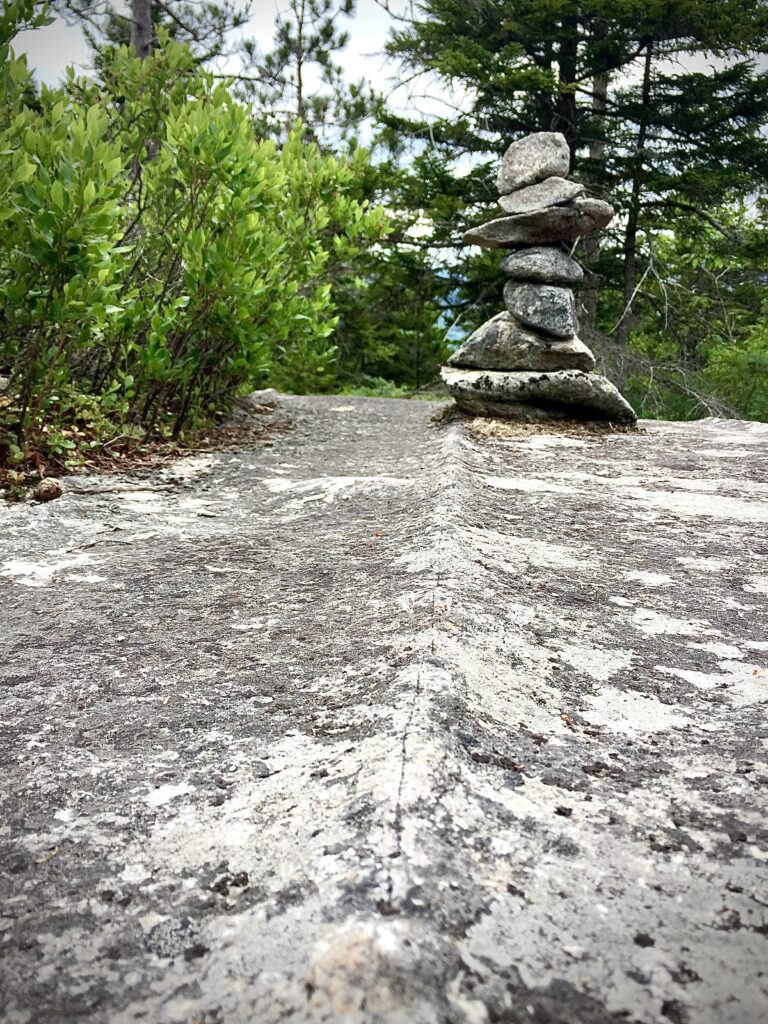
As we neared the road again, the remains of a long-abandoned farm appear in the woods, and one of New England’s ubiquitous rock walls (this one featuring an equally ubiquitous drainage culvert) marches along the side of the trail.
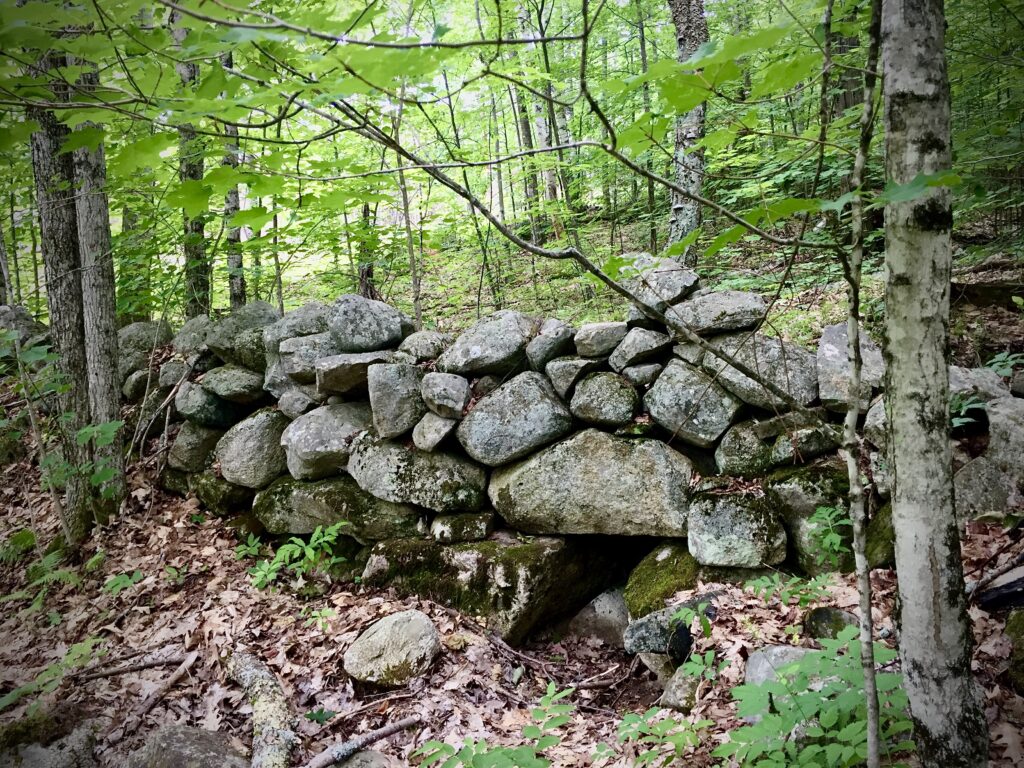
Since this was a bonus day, we added a bonus hike at the end on a short section of the Appalachian Trail. Here the trail swings close to Oliverian Brook, which pours into a rocky basin and down between granite walls.

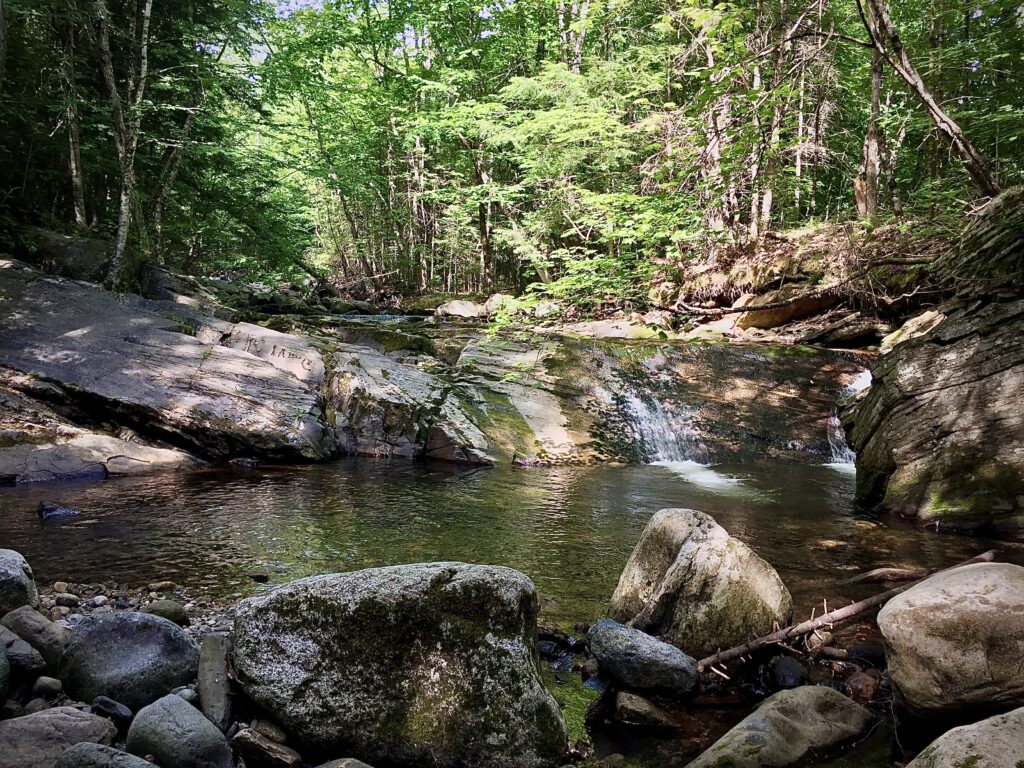
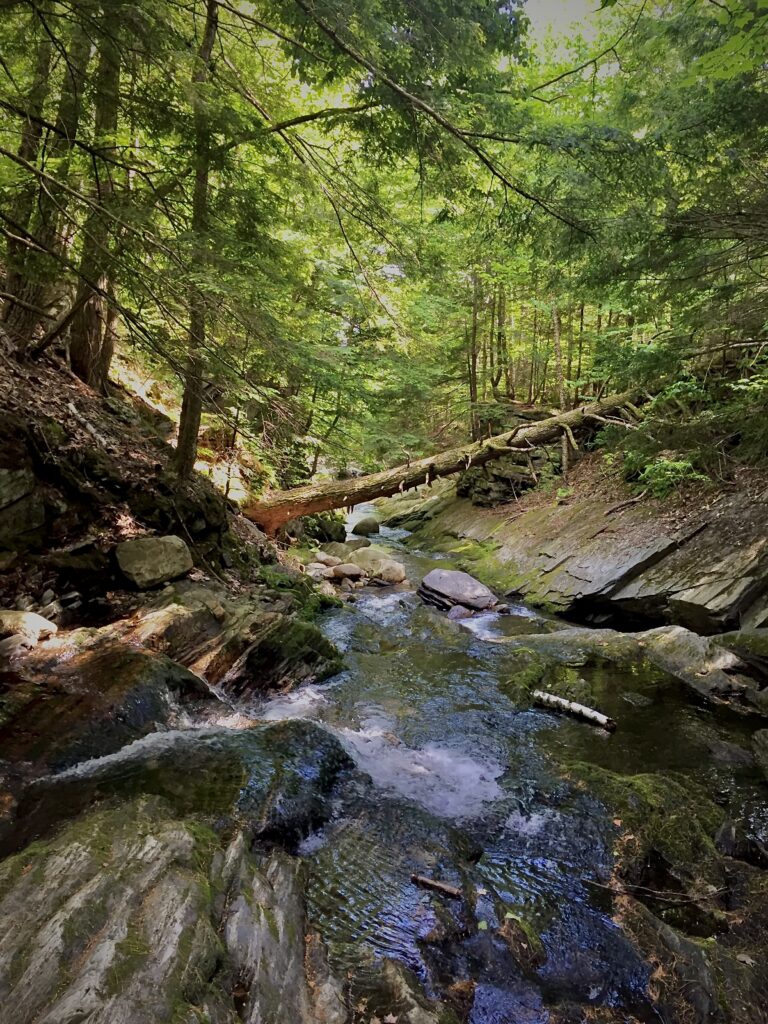
Notice the bright sunshine as the overcast broke up. I’m so glad we didn’t let the chance of getting rained on keep us indoors!

